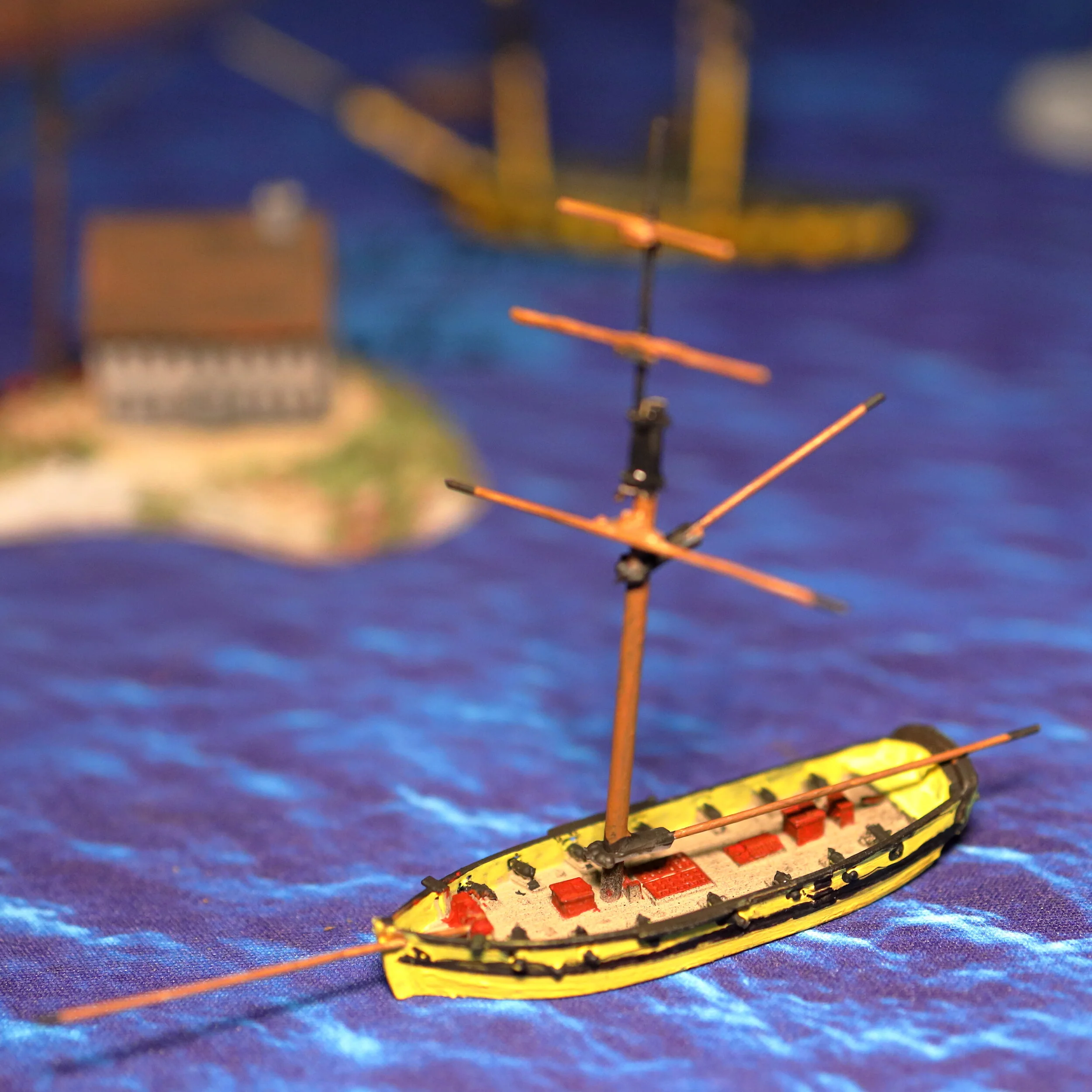80 ton Baltimore Clipper 6mm - 1/300th scale
80 ton Baltimore Clipper 6mm - 1/300th scale
Baltimore clippers also occasionally referred to as Baltimore flyers were small, fast sailing topsail schooner or brigantine rigged vessels used for trade around the coastlines of the United States and the Caribbean Islands and as privateers and letters of marque. They were also used as small warships, and later became the basis of coast guard cutters. Their hull-lines tended to be very sharp, with a "V"-shaped cross-section below the waterline and strongly raked stem, stern posts, and masts. The need for speed developed over time and also likely was driven by the desire to run blockades along the Atlantic cost and elsewhere.
By the late 18th century the Baltimore configuration was not only popular in the United States as merchant craft built in Britain as well. The Royal Navy initially avoided them as they were less stable as gun platforms due to their design for extreme speed vs a comparable brig-sloop. Also the schooner rig does not allow sails to be backed as easily, impacting maneuverability in close battle. They were later widely adopted on both sides of the Atlantic to enforce slave trade bans passed in 1807/1808.
Fell's Point shipyards became best known for producing these topsail schooners. During the War of 1812 (1812-1815), Fells Point's yards built and supported many privateers as well as letter of marque merchants, which ran the blockades, executing dangerous but much needed trade runs, as well as preyed on British shipping vessels. Consequently, Baltimore became a principal target of the British during the war, which eventually led to the attack on the city and the bombardment of Fort McHenry in September 1814.
This particular clipper is a patterned after a drawing produced by US naval architect William Doughty to serve as coast guard cutters, but would be typical of many small privateers of the war of 1812. The kit has a one piece hull, and builder’s choice of a long gun or carronade for the center deck pivot. It’s 3D printed in hi res SLA technology, with wood dowel, and floral wire masts and spars. This is a skill level 3 kit and contains delicate parts and requires hobby experience to assemble.
There are three versions of the kit - the base privateer schooner, with a pivit gun, an unarmed fishing schooner version, and an 8 gun version with no pivot gun.
This model features 3D printed parts: There are two types of 3D printed parts we use in our products. "FDM" is lower cost, and is what most would recognize as traditional 3D printing. This type of model printed in layers from thermal plastic (generally PLA or PETG), and is lightweight with reasonable detail but will have visible striation (or lines) that the hobbyist may want to clean up using putty, primer, or other hobby techniques. "SLA" is a laser cured photo-resin that has exceptional detail, and generally has a much smoother finish without significantly noticeable striation. This type of material is more expensive, and fine details can be more delicate. Some models may use either or both types of parts, and some models may have the ability for the buyer to select the print type under print options. These models are intended to be painted and may come in different colors.









